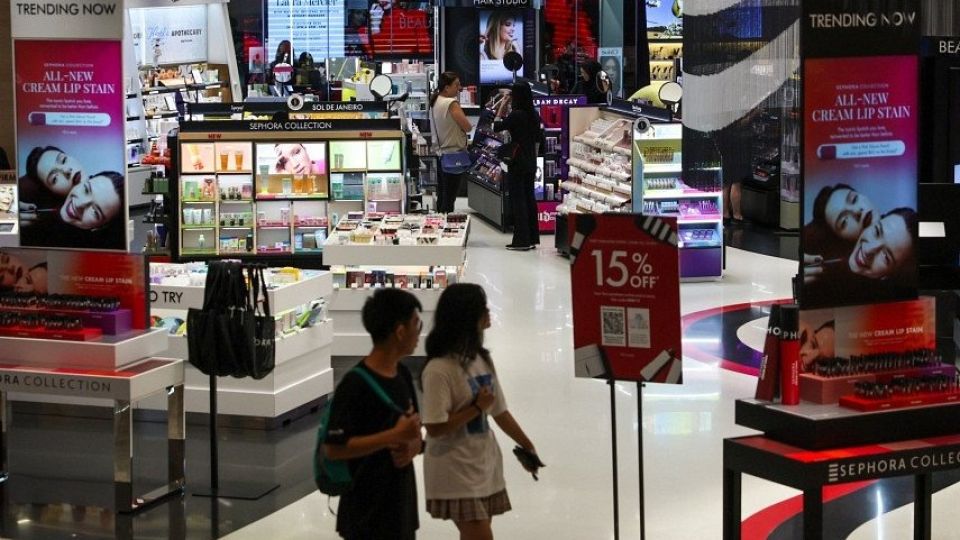November 27, 2024
SINGAPORE – Singapore’s core and overall inflation dropped sharply in October and more than expected, with both the Government and economists expecting the easing trend to continue into 2025.
Core inflation, which strips out private transport and accommodation costs to better reflect the expenses of households here, fell to 2.1 per cent year on year, from 2.8 per cent in September.
This was the lowest since December 2021, when it was also 2.1 per cent, and below the 2.5 per cent forecast by economists in a Bloomberg poll.
DBS Bank economist Chua Han Teng said the last time core inflation fell by a similar magnitude of 0.7 percentage points was in January 2013.
He said the core inflation increases in September and August were temporary blips in the broader downtrend.
October’s drop in core inflation was led by slower price rises in services, electricity and gas, and retail and other goods, the Monetary Authority of Singapore (MAS) and Ministry of Trade and Industry (MTI) said in their report on Nov 25.
Overall, or headline, inflation fell to 1.4 per cent year on year in October – the lowest reading since March 2021 – from 2 per cent in September. The drop was led by slower accommodation inflation and a steeper fall in private transport costs.
Private transport costs fell 2.5 per cent in October, more than the 2.4 per cent decrease in September, owing to a bigger drop in car prices.
On a month-on-month basis, which shows the momentum in prices, both core inflation and overall inflation eased by 0.3 per cent.
MAS and MTI said Singapore’s imported manufactured goods prices have continued to be on a broad decline in tandem with easing global inflation and the gradually strengthening trade-weighted Singapore dollar exchange rate.
Services inflation, which has been on an easing trend, should slow further through the rest of 2024, in line with moderating wage growth, they said.
As such, MAS and MTI expect core inflation to remain around 2 per cent for the last two months of 2024 – averaging 2.5 per cent to 3 per cent for the year, compared with 4.2 per cent in 2023.
Core inflation will step down further to 1.5 per cent to 2.5 per cent in 2025, they said.
As for overall inflation, accommodation inflation is expected to come in lower in 2025, which would partly offset the expected pickup in private transport inflation, the authorities said.
Taking these factors into account, overall inflation is expected to be around 2.5 per cent for the whole of 2024 – compared with 4.8 per cent in 2023 – and average 1.5 per cent to 2.5 per cent in 2025, they said.
Saying Singapore has made considerable progress in combating inflation, Mr Chua said DBS’ forecast for average core inflation in 2025 is 1.8 per cent, within MAS’ projected range.
A key reason for October’s steep fall in core inflation was the big drop in services inflation – 2.3 per cent year on year, from September’s 3.3 per cent.
This was due to smaller increases in the costs of holiday expenses and healthcare services.
Inflation for electricity and gas fell the most, to 2.5 per cent in October from 6.3 per cent in September, as prices of both utilities rose at a slower pace.
Retail and other goods inflation dropped to 0.1 per cent in October from 0.8 per cent, mainly due to a steeper decline in clothing and footwear prices, as well as a fall in the costs of medicine and health products.
Accommodation inflation edged down to 2.5 per cent from 2.7 per cent, on the back of a smaller rise in housing rents, while food inflation was unchanged at 2.6 per cent.
On how the latest consumer price data might affect Singapore’s monetary policy, which favours a stronger Singapore dollar to curb inflation, some analysts said it gives MAS more room for easing.
UOB associate economist Jester Koh said MAS may allow the Singapore dollar to strengthen at a slower pace when core inflation nears desired levels and when the effects of the 2024 goods and services tax hike have dissipated.
While MAS does not have an explicit inflation target, it has said that, on average, a core inflation rate of just under 2 per cent is consistent with overall price stability in the economy.
But OCBC Bank chief economist Selena Ling said: “There is no urgent need to ease the monetary policy stance in the near term when global inflationary clouds may be gathering.”
There are “too many moving parts and external uncertainties” such as US President-elect Donald Trump’s policies on tax and tariffs, as well as geopolitical tensions, she said.
She added: “Next to watch would be Singapore’s upcoming Budget 2025, which could see a bigger fiscal impulse to address cost-of-living issues and job security, amongst others.
“There is still domestic appetite for big-ticket items as there is ample liquidity, unemployment rates are low and household balance sheets are strong as interest rates decline.”


